

The Delaware Public Archives is proud to present this new online collection of lesson plans for Delaware teachers to use in their classrooms. Sponsored by the Friends of the Delaware Archives, this project provides teachers with ready-to-use, standards-based lessons that engage students with a range of primary and secondary sources. In creating this new set of lesson plans the Archives’ partnered closely with Delaware’s education community, including the University of Delaware, Wesley College and the Delaware Department of Education. Delaware teachers created the lessons with careful attention to Delaware’s social studies standards and formatting used in the Delaware Recommended Curriculum. We encourage you to review the lessons and discover what can be used in your classroom!
Special Thanks to the Friends of the Delaware Archives for sponsoring this education project. For more on the Friends (FODA), please see this page.
These formative assessments will focus on primary sources to gauge the level of understanding for the students.
The instructional videos include information on two warm-up activities and one exit ticket. These can be used “on their own” or with the appropriate lesson plan found on this web page.
● “Are We Ready for Equality”
● “Annual Report of the Delaware Council for Women”
● Basic Principles of the Federal Civil Defense Advisory Council
DE Geography Standard 1a and Civics Standard 4b
● Basic Principles of the Delaware Civil Defense Plan
● Brigadier General Moore’s Address to Religious Leaders
DE Civics Standard 1a and CCSS.ELA-Literacy. RH.11-12.2 and 3
● Highway Evacuation Plan 1951
DE Geography Standard 1a and 1b
• Delaware Relief Commission
• Federal Emergency Relief Administration
● Opening Activity – “Duck and Cover School Drill” (Civil Defense)
DE History Standard 2a and CCSS ELA-Literacy.RH.12.2 and 3
● Opening Activity – “New Deal Criticisms” (The Great Depression)
DE History Standard 2a and CCSS.ELA-Literacy.RH.11-12.7
● Exit Ticket – “New Deal Criticisms” (The Great Depression)
DE History Standard 2a and CCSS.ELA-Literacy.RH.11-12.7
For information about our motion pictures and audio holdings, please email us at archives@delaware.gov or (302)744-5000
Click here for an audio sample | Click here for a video sample
Grade Level: 4-5
 In this lesson, students will compare the British and American Armies using “The battle of Lexington” published by John H. Daniels & Son, and Percy Moran’s “Burgoyne’s surrender at Saratoga.” Students will also view and analyze a letter written by an Army officer from Delaware to the President (Governor) of Delaware during the American Revolution to understand the challenges the Continental Army faced.
In this lesson, students will compare the British and American Armies using “The battle of Lexington” published by John H. Daniels & Son, and Percy Moran’s “Burgoyne’s surrender at Saratoga.” Students will also view and analyze a letter written by an Army officer from Delaware to the President (Governor) of Delaware during the American Revolution to understand the challenges the Continental Army faced.
Teacher’s Plan: click here for the Lesson Plan
Burgoyne’s Surrender at Saratoga
Transcription Source: Military Archives Vol. 1 p.126-127
Grade Level: 4-5
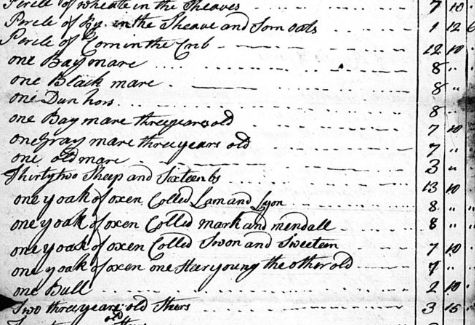 In this lesson, students will view and analyze the 1785 Inventory of Robert Burton (Sussex County), draw conclusions of how the principle of property has changed over time by comparing the inventory of Robert Burton to a post-civil war inventory.
In this lesson, students will view and analyze the 1785 Inventory of Robert Burton (Sussex County), draw conclusions of how the principle of property has changed over time by comparing the inventory of Robert Burton to a post-civil war inventory.
Teacher’s Plan: click here for the Lesson Plan
1785 Robert Burton Inventory Transcription
Grade Level: 4-5
 In this lesson, students will learn about Delaware and problems Delaware faced under the Articles of Confederation. Students will learn why Delaware is called the first state and Delaware’s ratification process. Students will create a chronology of
In this lesson, students will learn about Delaware and problems Delaware faced under the Articles of Confederation. Students will learn why Delaware is called the first state and Delaware’s ratification process. Students will create a chronology of
events leading to Delaware’s ratification of the United States Constitution and will identify cause and effect relationships between the events.
Teacher’s Plan: click here for the Lesson Plan
Grade Level: 4-5

In this lesson students will analyze and compare a map of Delaware in 1819 to a map of Delaware in 2008. Students will identify what has stayed the same and what has changed on the map. Students will also construct a logical response as to why these changes occurred.
Teacher’s Plan: click here for the Lesson Plan
1819 Map from DPA State Map Collection
2008 DELDOT Transportation Map
2017 DELDOT Transportation Map
Grade Level: High School
 In this lesson, students will study/research the debate over the Maysville Road Veto by Andrew Jackson to establish historical context.
In this lesson, students will study/research the debate over the Maysville Road Veto by Andrew Jackson to establish historical context.
Teacher’s Plan: click here for the Lesson Plan
Resources:
Resource 1 – Henry Clay, “Defense of the American System” (1832)
Resource 2 – Jackson v. Clay & Calhoun
Resource 3 – Alabama Document
Resource 4 – Delaware Document
Resource 5 – Maysville Rd Map (shown at right)
Grade Level: 11
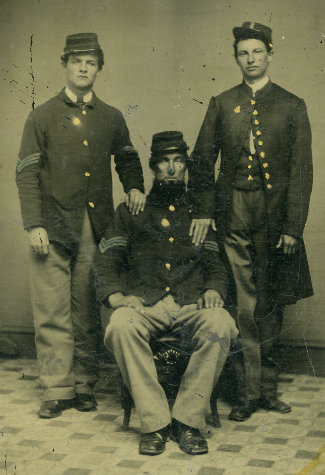
Students will gain/review a general chronology of key events leading to the outbreak of
the Civil War to examine the causes of the conflict. They will then examine primary sources to write their own historical interpretation to determine how likely it was that Delaware would support the Confederacy in the Civil War.
Teacher’s Plan: click here for the Lesson Plan
Document and Historical Background
Grade Level: 11
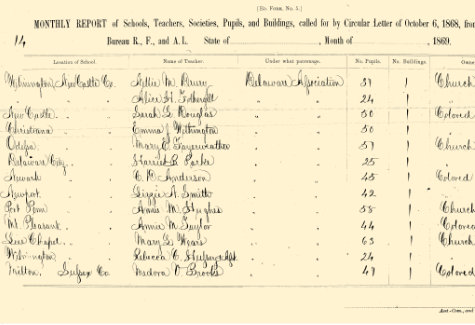 Students will brainstorm various measures of success for evaluating Reconstruction. They will then utilize their criteria to analyze sources about Reconstruction to evaluate its effectiveness. This lesson allows students to examine several documents at a time to emphasize the importance of analyzing multiple sources in evaluating historical events while also noting the importance of sourcing documents for facts and interpretations.
Students will brainstorm various measures of success for evaluating Reconstruction. They will then utilize their criteria to analyze sources about Reconstruction to evaluate its effectiveness. This lesson allows students to examine several documents at a time to emphasize the importance of analyzing multiple sources in evaluating historical events while also noting the importance of sourcing documents for facts and interpretations.
Teacher’s Plan: click here for the Lesson Plan
Document and Historical Background
Grade Level: 11
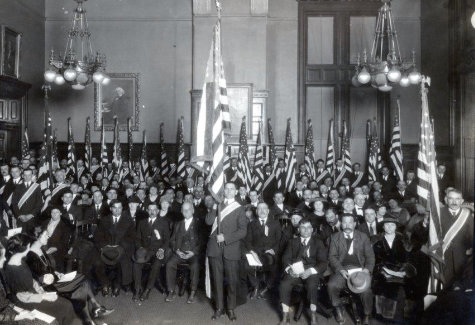 In this lesson students will analyze the reasons for the increasing foreign born population in the state of Delaware. They will identify the trend of foreign born population using Delaware Census Data. They will then examine three primary sources to identify how they influenced the trend on the table. Finally, students will practice making a historical claim and supporting it with evidence.
In this lesson students will analyze the reasons for the increasing foreign born population in the state of Delaware. They will identify the trend of foreign born population using Delaware Census Data. They will then examine three primary sources to identify how they influenced the trend on the table. Finally, students will practice making a historical claim and supporting it with evidence.
Teacher’s Plan: click here for the Lesson Plan
Document and Historical Background
Grade Level: 11
 Students will examine five documents from the 1920s and the 1950s to identify continuities and changes in the naturalization experience for immigrants to the United States. They will then support their claims using document evidence as support.
Students will examine five documents from the 1920s and the 1950s to identify continuities and changes in the naturalization experience for immigrants to the United States. They will then support their claims using document evidence as support.
Teacher’s Plan: click here for the Lesson Plan
Document and Historical Background
Grade Level: 11
 Students will read a secondary source about the growth of the DuPont Company between 1900 and 1930. They will then pair share and jigsaw two primary sources about the growth of infrastructure. Students will identify changes in these sources and account for the reason for those changes.
Students will read a secondary source about the growth of the DuPont Company between 1900 and 1930. They will then pair share and jigsaw two primary sources about the growth of infrastructure. Students will identify changes in these sources and account for the reason for those changes.
Teacher’s Plan: click here for the Lesson Plan
Document and Historical Background
Grade Level: 11
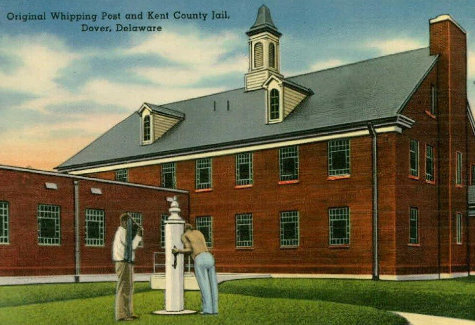 In this lesson students will examine the State of Delaware’s official use of the whipping post as a form of punishment until the mid-20th century. Students will analyze the use of the whipping post through correspondence between a Delaware Governor and a resident of Smyrna. Students will determine if the interpretation of “cruel and unusual punishment” in the Constitution has changed over time.
In this lesson students will examine the State of Delaware’s official use of the whipping post as a form of punishment until the mid-20th century. Students will analyze the use of the whipping post through correspondence between a Delaware Governor and a resident of Smyrna. Students will determine if the interpretation of “cruel and unusual punishment” in the Constitution has changed over time.
Teacher’s Plan: click here for the Lesson Plan
Document and Historical Background
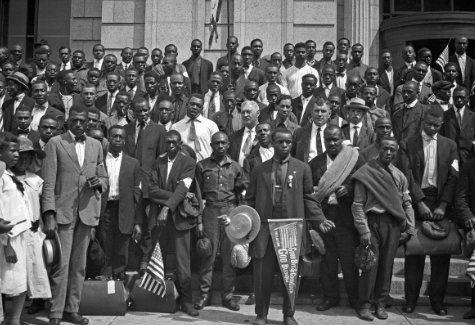
In this lesson students will examine the conscription of Americans through three conflicts – the Civil War, World War I, and the Vietnam War. Using videos and primary sources, students will analyze how the draft changed and evolved over the course of American history.
Teacher’s Plan: click here for the Lesson Plan
Document and Historical Background
Grade Level: 9-11
 This is a series of lessons or strategies to help students understand how the U.S. Government mobilized consensus and war preparedness during World War I.
This is a series of lessons or strategies to help students understand how the U.S. Government mobilized consensus and war preparedness during World War I.
Teacher’s Plan: click here for the Lesson Plan
Resources:
SOAPS-Tone Documents:
Poster Analysis:
More Resources:
Wilson Speech | DPA Survey | Assessment
Grade Level: 6-8
 Students will analyze the response of the State of Delaware to the 1918 flu epidemic by examining primary and secondary sources describing the impact of the epidemic on the state of Delaware.
Students will analyze the response of the State of Delaware to the 1918 flu epidemic by examining primary and secondary sources describing the impact of the epidemic on the state of Delaware.
Teacher’s Plan: click here for the Lesson Plan
Presentation: click here for the Spanish Flu Presentation
Resources:
Document: Synthesis and Simulation
Photographs:
Grade Level: 11
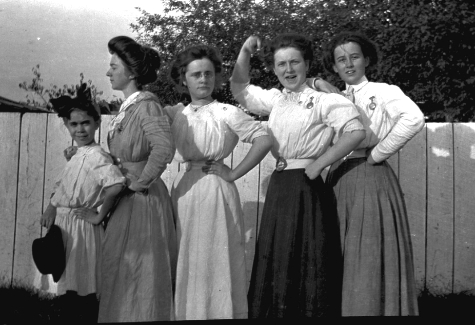 Students will begin the lesson by analyzing a cartoon from 1920 showing a father overwhelmed by the responsibility of caring for the children while their mother leaves to vote in order to gain context for reasons why some were opposed the women’s suffrage. After setting that context, students will learn about the ratification debate in Delaware for the 19th amendment to understand the way that women’s changing status at the turn of the 20th century illustrated an example of both the dynamic nature of the Constitution and the balance of power in place to preserve traditions.
Students will begin the lesson by analyzing a cartoon from 1920 showing a father overwhelmed by the responsibility of caring for the children while their mother leaves to vote in order to gain context for reasons why some were opposed the women’s suffrage. After setting that context, students will learn about the ratification debate in Delaware for the 19th amendment to understand the way that women’s changing status at the turn of the 20th century illustrated an example of both the dynamic nature of the Constitution and the balance of power in place to preserve traditions.
Teacher’s Plan: click here for the Lesson Plan
Document and Historical Background
Grade Level: 11
 Students will evaluate several sources about the New Deal, nationally and in Delaware, to examine if the New Deal resulted in significant change for Americans. They will then answer this essential question with supporting evidence from primary sources.
Students will evaluate several sources about the New Deal, nationally and in Delaware, to examine if the New Deal resulted in significant change for Americans. They will then answer this essential question with supporting evidence from primary sources.
Teacher’s Plan: click here for the Lesson Plan
Document and Historical Background
More:
A Photo Essay on the Great Depression
Grade Level: 11
 Students begin the lesson by brainstorming events in history where citizens have worked to alter the law based on changing social values. They then use a graphic organizer to analyze four documents from citizens petitioning the government. Finally, students will research another example of a time when citizens petitioned the government to find similarities and differences across instances and evaluate the extent of change over time in petitioning the government.
Students begin the lesson by brainstorming events in history where citizens have worked to alter the law based on changing social values. They then use a graphic organizer to analyze four documents from citizens petitioning the government. Finally, students will research another example of a time when citizens petitioned the government to find similarities and differences across instances and evaluate the extent of change over time in petitioning the government.
Teacher’s Plan: click here for the Lesson Plan
Document and Historical Background
Grade Level: 11
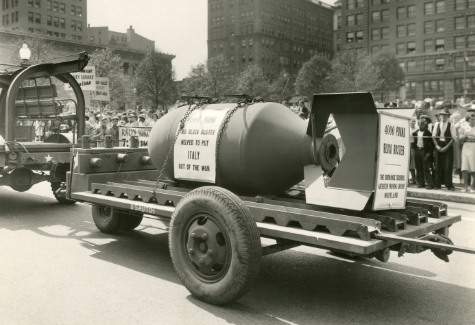 Students will analyze the use of propaganda during America’s conflicts dating back to the Spanish-American War. Students will then focus on propaganda posters of the World War II era and will determine the effectiveness of these posters along with examining the truth versus the propaganda that is displayed in each of these posters.
Students will analyze the use of propaganda during America’s conflicts dating back to the Spanish-American War. Students will then focus on propaganda posters of the World War II era and will determine the effectiveness of these posters along with examining the truth versus the propaganda that is displayed in each of these posters.
Teacher’s Plan: click here for the Lesson Plan
Document and Historical Background
Grade Level: 11
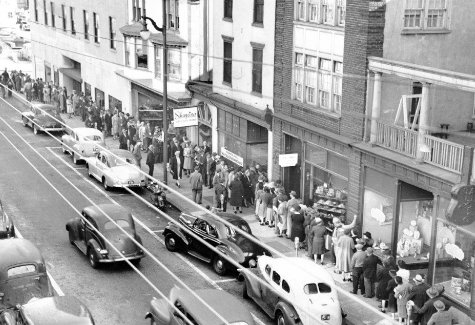 Using primary sources and several different case scenarios, students will explore the idea of government sanctioned rationing. The students will then examine the effectiveness of government rationing that took place during World War II.
Using primary sources and several different case scenarios, students will explore the idea of government sanctioned rationing. The students will then examine the effectiveness of government rationing that took place during World War II.
Teacher’s Plan: click here for the Lesson Plan
Document and Historical Background
Grade Level: 11
 In this lesson students will examine the integration of schools in Delaware through a case study of the Milford desegregation crisis of 1954. Through videos and primary sources, students will analyze the background of the Supreme Court’s decision of Brown v. Board and what happened when the Milford School District attempted to integrate its high school four months after this landmark case.
In this lesson students will examine the integration of schools in Delaware through a case study of the Milford desegregation crisis of 1954. Through videos and primary sources, students will analyze the background of the Supreme Court’s decision of Brown v. Board and what happened when the Milford School District attempted to integrate its high school four months after this landmark case.
Teacher’s Plan: click here for the Lesson Plan
Document and Historical Background
Grade Level: 7-8
 In this lesson, students will read and hear about events in the life of the Bulah family of Hockessin, Delaware as context for analyzing change over time, and understanding how civil rights help protect American citizens and secure our freedom.
In this lesson, students will read and hear about events in the life of the Bulah family of Hockessin, Delaware as context for analyzing change over time, and understanding how civil rights help protect American citizens and secure our freedom.
Teacher’s Plan: click here for the Lesson Plan
Presentation: click here for the PowerPoint presentation
Resources:
Grade Level: 11
 In this lesson, students will focus on a variety of communication tools that may have been available during the Cold War era. They will also explore the Cold War from the Soviet perspective. Using primary sources and videos, the students will create a brief radio broadcast based on the information they have gathered.
In this lesson, students will focus on a variety of communication tools that may have been available during the Cold War era. They will also explore the Cold War from the Soviet perspective. Using primary sources and videos, the students will create a brief radio broadcast based on the information they have gathered.
Teacher’s Plan: click here for the Lesson Plan
Document and Historical Background
Grade Level: 11
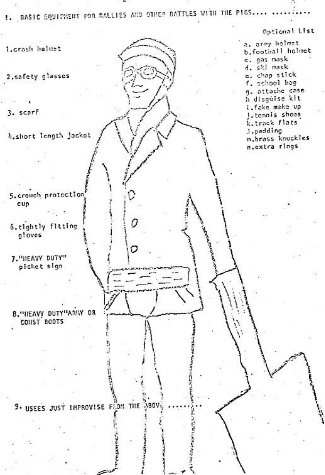 In this lesson students will examine different methods of protest and counter-protest that took place during the Vietnam War. Using videos along with letters to the Governor concerning the war, students will analyze the accuracy of the information provided in the protests and the effectiveness of the method of protest.
In this lesson students will examine different methods of protest and counter-protest that took place during the Vietnam War. Using videos along with letters to the Governor concerning the war, students will analyze the accuracy of the information provided in the protests and the effectiveness of the method of protest.
Teacher’s Plan: click here for the Lesson Plan
Document and Historical Background
Grade Level: 9-12
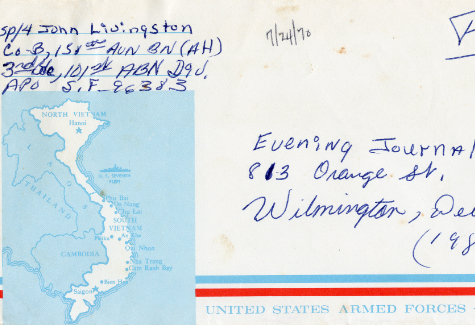 In this lesson, students will read letters written by Delaware soldiers to Nancy E. Lynch’s Vietnam Mailbag newspaper column, which appeared in the Wilmington Morning News, expressing different views on the Vietnam War. Students will understand that a historian’s choice of sources will impact his/her conclusion.
In this lesson, students will read letters written by Delaware soldiers to Nancy E. Lynch’s Vietnam Mailbag newspaper column, which appeared in the Wilmington Morning News, expressing different views on the Vietnam War. Students will understand that a historian’s choice of sources will impact his/her conclusion.
Teacher’s Plan: click here for the Lesson Plan
Presentation: click here for the Vietnam Mailbag Presentation
Resources:
Resource 1 (worksheet)
Resource 2 (worksheet)
Resource 3 (worksheet)
Resource 4 (additional letters)
Resource 5 (worksheet)
The entire Vietnam Mailbag collection is available to view here.
Grade Level: 11
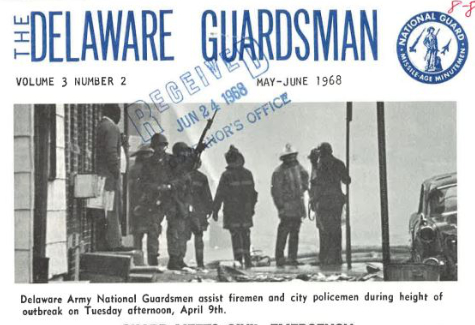 In this lesson, students will compare different perspectives about the presence of the National Guard in Wilmington and identify why they believe the National Guard stayed in Wilmington for over nine months.
In this lesson, students will compare different perspectives about the presence of the National Guard in Wilmington and identify why they believe the National Guard stayed in Wilmington for over nine months.
Teacher’s Plan: click here for the Lesson Plan
Presentation: click here for the Race Riots Presentation
Resources:
Worksheets:
Document Worksheet | Video Worksheet
Grade Level: 11
In this lesson, students will read letters written by Delaware residents to the Governor to express their opposition to busing mandated by a federal court. Students will evaluate the arguments presented in these sources. There is an AP and non-AP version of the lesson.
Teacher’s Plan: click here for the Lesson Plan
Presentation: click here for the Segregation Presentation
AP Teacher’s Plan: click here for the AP Lesson Plan
Resources:
Resource 2 (worksheet)
Resource 3 (worksheet)
Resource 5 (worksheet)
If you would like to contact us about suggestions, issues, corrections and/or for additional materials such as answer keys, please contact us at archives@delaware.gov
Related Topics: Educational Technology, Lesson Plan, lessons, Research